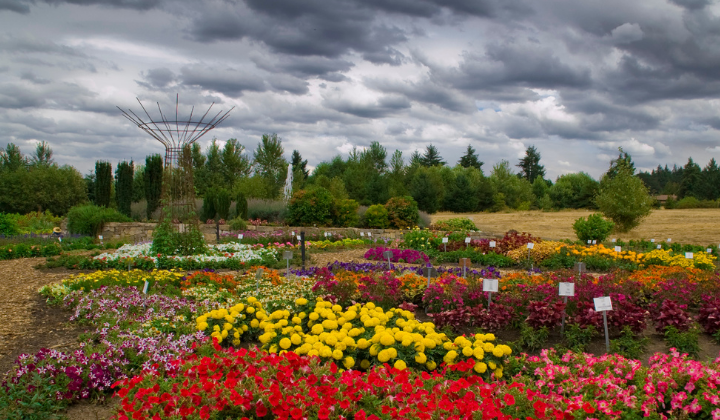
– Manuscript –
Summer is a time for gardeners to enjoy the beauty of flowers and the harvesting of fruits and vegetables they have grown. But gardeners also recognize the risks that severe summer storms can bring.
In the United States, weather officials are predicting another busy storm season in some areas. This could mean heavy rain, tropical storms and hurricanes.
Associated Press gardening expert Jessica Damiano has some useful suggestions for protecting gardens — along with homes and other structures — before and after serious storms.
Before the storm
When storms are predicted, take down patio covers and bring outdoor furniture, like chairs and tables, indoors. Examine trees for broken branches and remove them. This way, they will not be sent flying in strong winds. If the trees are large, hire a tree expert to examine them. The cost of this service is nothing compared to the damage trees might cause if stormy weather uproots them and they fall.
In warmer climates, palm trees stand up well to high-wind conditions. So there is no need to cut them. It is suggested, however, that any coconut fruits are removed and stored safely indoors.
If your soil is mostly wet — either naturally or from recent rain — put down about 8 centimeters of mulch over plant areas and borders. This will offer protection against water flows and possible flooding. Some trees are more likely to come out of the ground in these conditions because their roots do not go very deep. These include white pine, birch, willow and tulip poplar.
Put a stake down next to any newly planted trees to support them. Bring hanging flowers and other contained plants into the house or another sheltered area. If this is not possible, line them up against the house or next to a wall.
Protect any flowers on small plants by placing buckets or other protective coverings over them. Wrap larger plants with cloth material secured with string. Orchids, bromeliads, succulents, air plants and other tree-dwelling plants can be tied into place with fishing line.
Place special garden cloth over young, growing seedlings and secure it to the ground with stakes.
After the storm
Once the storm has passed, quickly clear away all fallen fruit and vegetables. If left on the ground, the food can rot. It can also attract unwanted animals. Remove any protective coverings you had put in place.
Examine all trees for damage. If you can safely remove hanging, broken branches from the ground, do so. But avoid removing anything higher than your head or climbing a ladder. Such work is better left to professionals. The International Society of Arborists keeps a list of registered tree professionals on its website.
If a small tree has come down, whether by break or uproot, straighten and stake it as soon as possible. You may even have to replant. Put down mulch or straw over the soil, keeping it 10 centimeters away from the center of the tree.
Water the tree normally for the rest of the growing season. This will help re-establish the root system. Wind helps trees strongly develop, so only keep the stakes in place for six months to a year.
Storms near oceans can spread a lot of salt on coastal lands. High levels of salt can dry out and damage trees and bushes. Putting mulch around trees can help keep them wet. Watering deeply can also help remove any salt from the soil around plants and trees.
Most plants will likely not survive if large amounts of salt collect on top of the soil and form a hard surface. The soil, however, can be saved. To treat salt damaged areas, water deeply, then spread gypsum over the soil. This substance reacts with the salt to form sodium sulfate, which will wash through the ground with repeated waterings. In these cases, you should continue watering deeply for the rest of the year.
Words in This Story
gardener – n. someone who works in a garden, growing plants, trees and other things
mulch – n. a covering of decaying leaves and other materials that can be spread over soil to keep water in it or to improve it
stake – n. a strong stick or metal bar with a pointed end\
bucket – n. a container with an open top and a handle that is often used to carry liquids
rot – v. to break down or decay
attract – v. to cause a person to become interested in something or someone
ladder – n. a piece of equipment used for climbing up and down to reach high things
straw – n. dried, yellow stems of crops that are often used as food for animals or as a protective layer on the ground
*This article has been edited and reprinted from VOA Learning English with permission from Voice of America (VOA) for use in English language materials.
